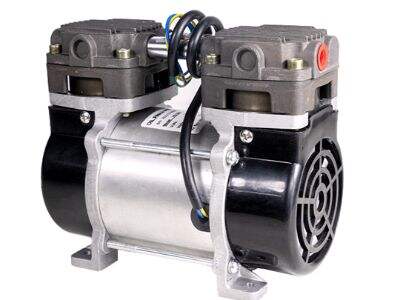So vacuum pump is a special sort of machine or rather appliance which people use at home, in offices and in cars. These machines are correctly ubiquitous in our lives. A vacuum pump removes air or gas from a container. Removing air creates a vacuum, which can be helpful for a lot of things. For example, these machines help cool systems, and they are also used to create vacuums, for medical or scientific uses. This is marvelous to learn that vacuum pumps are essential in allowing various work to carry out the jobs. However, just like any other machinery, vacuum pumps sometimes may encounter some issues that need to be fixed so that it can continue working effectively.
How to Properly Maintain Your Vacuum Pump
Proper maintenance is the key to ensuring that your vacuum pump continues to run smoothly. Use these excellent tips to ensure that your vacuum pump remains in excellent condition:
Clean Filter Often: The filter is one of the most frequently used pump parts that catch the dust and dirt. And if it gets too dirty, it would clog the pump and makes it stop from working. Therefore, clean or replace the filter regularly and helps the pump operate smoothly.
1. Check the Oil Level Often. The most important component inside the vacuum pump oil. It lets the components work uniformly. Regularly check the oil level and change it when required. If the level of oil is less, the pump can't work properly and may break down.
Keeping the Pump Motor Clean: The motor of the pump must be clean and free from dirt or junk. A clean motor means the pump runs better and longer, too.
Repairing Noisy Pumps
It is really frustrating when your vacuum pump full of noise. It also might mean something is wrong and needs to be addressed. Steps to repair a noisy vacuum pump:
Check the Belt: The belt connects the several parts of the pump. If the belt is not properly set, it produces noise in the pump. Confirm that the belt is in excellent condition and also properly set.
Check the Bearings: Bearings are parts that facilitate the pump to freely turn. Once they wear, if they create rattling sounds. Check for the bearings and change them if required to stop this noise.
Lubricate the Pump — Lubrication is necessary for a silent and operational pump. "When the vacuum pump fails to lubricate, it starts making noise and causes other issues. Be sure to apply lubricant as required.
Keeping Your Pump Cool
Overheating of the vacuum pump can be dangerous, so keeping it cool as much as possible is essential. Here are tricks that can help keep your pump at a safe temperature:
Do Not Place It Near Heat Sources: Make sure that your vacuum pump is not placed too close to machines or apparatus that produces heat. Heat can make the pump work more than it should and may overheat.
Cool It Down: You can set up a fan near the pump to cool it down. The fan will allow air to circulate, keeping the pump safe.
Oil Peace: You’ll want to ensure that you have fresh oil with the proper viscosity in the pump. (The oil can cause the pump to overheat, so always check the oil and change it if it’s dirty or thick.)
Repairing Leaks and Valve Issues
If your pump is no longer holding suction, it might be because your seals or valves are leaking. Here’s how to redeem these deficiencies:
Tighten Loose Connections Explained: When using Medela pumps over time, the different parts of the pump may loosen gradually. Check all your connections and tighten up any that may be loose. This will lessen the probability of leaks and ensure your pump works efficiently.
Replace Worn Out Parts: Any seals or valves that are worn out or damaged should be replaced. By replacing with new parts, it helps the vacuum pump towards optimal operation, eliminating potential external leaks.
Clean Oil: As always, contaminated oil can damage the seals and valves. Ensure the ac vacuum pump oil is clean and, not contaminated by dirt. Regular oil changes will keep your pump healthy.
Making Your Pump Work Better
Now, with any issues having been dealt with, you can look for other ways to optimize your vacuum pump operation further. Here are a few things you might find useful for that purpose:
Calibrate the pump. Calibrating refers to configuring the pump to get the work done that it's needed to get done. Set the pressure and flow rate at appropriate values for the work.
GET A PROPER PUMP: Not all pumps will do in every scenario. Always go for a pump that is made for the strong suction if you need one. The appropriate pump will help you a lot in doing your work.
Maintain the Pump _ Regularly: Continue the upkeep of your vacuum pump based on the maintenance tips given above. Routine checks and cleanings will ensure that it performs as it should.
 EN
EN
 AR
AR
 BG
BG
 CS
CS
 DA
DA
 NL
NL
 FI
FI
 FR
FR
 DE
DE
 HI
HI
 IT
IT
 JA
JA
 KO
KO
 NO
NO
 PL
PL
 PT
PT
 RO
RO
 RU
RU
 ES
ES
 SV
SV
 TL
TL
 ID
ID
 LT
LT
 SR
SR
 SK
SK
 SL
SL
 UK
UK
 VI
VI
 SQ
SQ
 ET
ET
 HU
HU
 TH
TH
 TR
TR
 AF
AF
 MS
MS
 GA
GA
 HY
HY
 AZ
AZ
 KA
KA
 MN
MN



